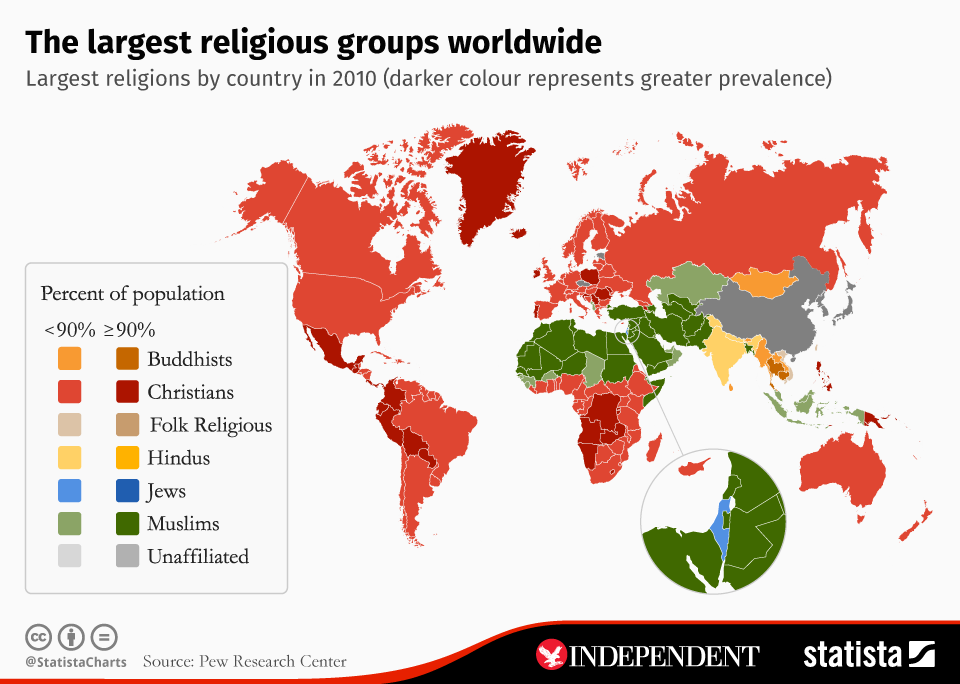What are the largest religious groups around the world, and where are they?
The distribution of religions across the world

The world is going to become more religious, with the number of people who identify as non-religious shrinking as a percentage of the world’s population, according to a report by the Pew Research Centre.
But what are the world's religions, and how they distributed? This map, developed by The Independent and Statistia, shows which religions have the most subscribers in different parts of the world.
The changes in numbers of religious followers are mainly down to fertility rates and the relatively youthful age of many believers. Christianity, currently the dominant religion in the entire western hemisphere, is expected to remain the world’s most popular religion. By 2050, if current trends continue, four out of ten Christians will live in sub-Saharan Africa.
However, Christianity is expected to decline in America. In a fall from being the current three-quarters of the population, just of two-thirds of Americans are expected to identify as Christian by 2050.
Judaism, currently the second largest American religion, will also decline in the US, but the global Jewish population is expected to increase by 2050.
Islam, the second most popular world religion, is currently strongest in the Middle East – the region of Mecca and Medina, the two most holy sites in Islam – and North Africa.
However, according to the study, the number of Muslims will be almost equal to the number of Christians in the world by 2050. In Europe, Islam is expected to be the region of 10 per cent of the population and there will be more Muslim than Jewish people in the US.
In India, Hinduism is the clear majority religion and this is expected to remain the case in 2050. However, India will also have the world's largest Muslim minority population by this time.
The world’s most populous nation, China, is registered as ‘unaffiliated’ on the map. Under the rule of Mao Zedong, religion was suppressed with the Communist government adopting an atheist stance. However, the government has since relaxed rulings on religion and China is host to a great variety of faiths, though only five are recognised by the government: Buddhism, Taoism, Islam, Protestantism and Catholicism.
However, spiritual thought in China predates many of these religions and the teachings of Confucianism, Taoism and Buddhism are still influential today.
Join our commenting forum
Join thought-provoking conversations, follow other Independent readers and see their replies
Comments